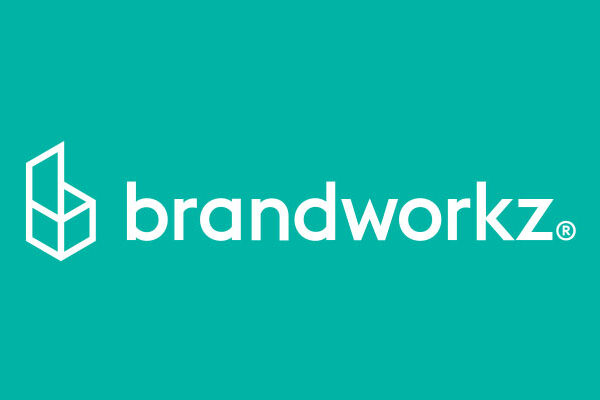The great thing about brand management is that there are always going to be new ways to make it better. The scary thing about brand management is that there are always going to be new ways to make it better AND it can be overwhelming, or even impossible, to figure them out.
As great as your brand is bound to be already, truly successful brand management only happens when you’re constantly trying to better it — luckily for you, we’ve already compiled the best brand management tips of 2022 in this very blog. Read on to find out what they are and how you can integrate them into your brand management today.
Suggested reading: If that’s not enough, we also have a fully comprehensive Brand Consistency Toolkit to ensure that your brand is kept consistent across all possible channels!
1. Use templates
Whether you’re totally satisfied with your branding as it stands or want to leave a healthy amount of room for it to evolve as and when you please, templates are a great way of maintaining consistency and control. By using premade and preapproved templates for your brand assets (think things that make up your brand like social post layouts, flyers, digital ads, etc.), you never run the risk of your brand management going off-target. Look for templates that:
- Save on resources: While crucial to brand management, creating and managing brand artwork can be a long, intensive process that takes up money, time, and resources. Most brand management software (BMS) will provide templates that you can customise or localise to your branding with little to no training required.
- Enable creativity: You don’t and shouldn’t have to compromise on creativity for the sake of consistency! Advanced templates will allow you and your team members to action and discuss whatever new ideas they come up with, all while maintaining the core messaging and formats of your branding.
2. Apply sophisticated permissions
Keeping your precious brand assets safe and secure has always been a priority for brand managers but, frankly, installing a few firewalls and calling it a day does not cut it anymore. As techniques to manage your brand assets advance, so should the ways you and your teams can access them. Your permission capabilities should be:
- User-friendly: Taking on a digital asset management (DAM) system is the best way to enable user-friendliness. As a centralised platform that keeps your approved brand assets in a single network that’s easily accessible and managed, a DAM is key to making your brand management simple and effective for everyone involved.
- Provide histories: Knowing the ins and outs of how your teams interact with your brand assets is helpful in stacking up which are the most valuable and informing your decisions regarding them going forward. You gain insights like which assets may be overused or underused so that you know how best to address their usage. Most DAM systems will have this included by recording and providing data on who approves what assets, and when.
3. Get access to reports and analytics
Getting insights into how your branding team members interact with your assets is such a crucial factor that it’s getting its own section! This tip is really about ensuring that those insights are delivered to you in ways that are actionable and provide real visibility. Incorporate reporting and analytics processes that provide:
- Helpful information: “Helpful” in this case ties back to making sure that you’re getting the best return on your investment in regards to ALL of your brand assets. A BMS platform that has reporting and analysis capabilities will be able to provide an audit trail of whatever assets and/or systems you’re implementing, so that you can get real-time information on your brand management decisions. The Insights feature of Brandworkz for example provides a list of all the URLs where a brand image is used so that you can field PR mentions as well ensure that your brand isn’t being used somewhere where it shouldn’t be.
Customisation of reports: Every unique brand is going to have its own unique goals and desires. To keep workflows effective and productive, look for a BMS platform that allows you to customise your reports so that you can be given insights that are all the more specific to your strategies.
👉 Boost your brand management in 2022 with a free Brand Consistency Toolkit 👈
4. Use editable brand guidelines
Brand guidelines are the backbone of your brand assets and key to guaranteeing consistency and an informed brand understanding across the board. With that being said, you’d want to leave some room for creativity and growth. Editable brand guidelines perfectly bridge the gap between keeping brand consistency and allowing for a variety of brand assets to be developed and worked on. This proves useful when branding and marketing spaces inevitably change with time. Rather than having to painstakingly redo your entire brand playbook and redistribute it, platforms like Brandworkz enable you to simply update and publish a page on the spot that’s ready to be viewed and accessed by everyone. To really see the benefits of guidelines to your brand management, make sure that they are:
- Comprehensive: To actually make sure that your guidelines are keeping your brand assets consistent, decide on what elements you want to keep consistent in the first place. This may be factors like your colour palettes and logos or even legal elements to ensure that your assets remain compliant. Comprehensiveness in this case also refers to how helpful your guidelines are for your team members. Include aspirational examples of brand assets along with your guidelines so that everyone involved knows what good looks like, even as they’re developing new content.
- Accessible: While your guidelines should be able to be changed as and when needed, your team members should also know when those changes happen! Using a digital solution like BMS will keep your brand guidelines accessible by all, even as they update through time. Plus, you get the advantage of being able to edit and distribute your guidelines at ease.
5. Streamline your MarTech stack
So, we know that we’ve been providing ample reason for why you should look to technological solutions to upscale your brand management. However, taking on too many different tools at once can cause its own problems. Having a MarTech stack that’s out of control is the gateway to losing brand consistency and confusing your branding strategies as a whole. To streamline your MarTech stack, you should:
- Reassess: Taking a step back and critically thinking about what tools you have and how exactly they’re contributing value — if any! — to your brand management is the first step. Consider factors like how often certain tools are used, whether multiple tools you have in your stack possibly overlap in their capabilities, and if there are features within your current stack that you’re not even using.
- Standardise: Be sure to also consider how simple it is for your team members to interact with your MarTech stack. Too many different tools can result in them being unable to integrate and/or interact with each other, leading to workflows becoming all the more convoluted and scrambled.
- Consider centralised tools: Your CMS, marketing automation software, and possibly your CRM will all have basic DAMs built-in. That’s three DAMs that need to be maintained! You should streamline to one centralised DAM that will feed assets into each system as required. Having capabilities like access to stored on-brand files and workflow processes within a single platform mean that you won’t have to take on multiple tools that do the same thing. Look out for combinations of a DAM system with BMS to really get the most out of the one investment.
6. Employ brand listening
Your brand is affected by many, many factors but it’s inarguably most affected by your audience. Ways of paying attention to and taking note of your brand’s customer experience must now go beyond waiting for them to come to you with their feedback and the occasional check of your online reviews. Being proactive and systematic in how you engage in brand listening is key to improving your brand for the long term. Your brand listening should include:
- Monitoring social media: In today’s day and age, you’d be hard-pressed to find any person, let alone any brand, that doesn’t have a social media presence of some kind. The convenience and widespread use of social media platforms guarantees that you’ll be getting the best idea of your brand perception from getting online and seeing what your customers have to say.
- Feeding back your feedback: It’s all well and good to hear out what your audience and the wider public have to say about your brand — it’s another to actually take what they say into account. Consider using social listening software tools to help you cut through the noise of social media so that you can derive helpful insights, and even filter your research based on factors like keywords and countries.
Suggested reading: Get a refresher on the elements of brand management you need to pay extra attention to with our blog 6 Critical Elements of Brand Management.
Using software to deliver better brand management
While all these tips and tricks may seem daunting all laid out on the screen, they’re actually all simple enough to implement into any brand management strategy. At the end of the day, these tips are just additional ways to enable your brand management to hit existing goals faster and better. The only way to stay ahead of new developments in brand management is by partnering up with something that’s backed up by the experts, guaranteed to be updated with the latest, best capabilities, and is not only integrable with your existing brand management, but OPTIMISES it.
Enter brand management software. The capabilities of an effective BMS ensure that all of your brand management strategies will be streamlined and efficient, all to better your organisation’s inner workings and end results. Instead of going through the hassle of trying to take up multiple ways of incorporating every new brand management trick in the book, BMS serves as a one-stop-shop to set your brand up for success.
You don’t have to just take our word for it (even though you’ve just read over 1000 words or so from us already.) Find out how these tips — and many more — can take your brand management forward by signing up for a demo with Brandworkz.





